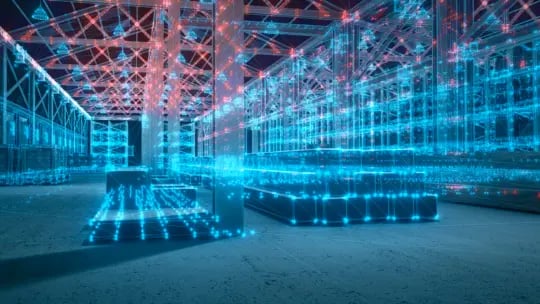Understanding LiDAR-Based Security Solutions
Technology has always played an important part in security – as far back as the invention of the lock and key. Over centuries, the world has thoroughly tested innovative ways to keep businesses safe, and any tech that withstood those tests became standard— from barred windows to stereoscopic security cameras. But we aren’t done yet! Technological advancement will be an ongoing challenge and fascination, for all time. Now, LiDAR-based security solutions are becoming vastly implemented.
Let's learn more!
Prime Secured is always on the lookout for new technologies to keep people safe on behalf of our customers, and we believe light detection and ranging (LiDAR, pronounced “lye-dar”) tools have earned their place as a gold-standard security technology.

LiDAR isn’t a completely new technology. It’s been used for mapping and gathering weather data for decades. But more recently the technology has been adapted as a security solution, providing accurate and detailed data about activity on a property. Whether used alongside existing video surveillance security cameras—or in some cases as a standalone solution—LiDAR can be more accurate, more flexible, and more affordable than previously existing systems.
To give you a better idea of the advantages of LiDAR, we sat down with Gerald Becker VP, Market Development & Alliances for Quanergy Systems Inc., a leading LiDAR provider.
How does LiDAR Work?
“LiDAR is a time-of-flight sensing technology that emits a low powered eye safe laser beam and measures the time it takes for the laser to complete a round trip between a sensor and an object” Becker explained.
“The laser bounces back from an object and leaves millions of data points. The resulting data is used to generate a 3D point cloud image. We use those points to detect, track and classify objects speed, location and direction in a 3D space.”

Using this information, the system can track an object’s path through the observed area. The software assigns a point in space to any moving object it detects, making it easy to track when the object passes between two or more sensors. This gives the user a complete view of the object’s path.
As a result of such precise tracking ability and the wide field of view of the sensors compared to standard PTZ cameras, LiDAR offers many advantages and can fill a number of gaps you likely have in your ability to monitor a physical space.
Here are some of the ways LiDAR can enhance your current security solutions:
1. More Coverage with Fewer Units
One of the primary advantages a LiDAR system can bring to your building is a fully 3D and 360-degree view. PTZ cameras have a limited view and achieving complete visual coverage of a large area can require quite a few cameras—each requiring its own wiring needs and maintenance. Covering the same amount of space with LiDAR requires far fewer units and is likely to provide more overlap. A single MQ-8 sensor can cover up to 15,000m2 area, up to 100x wider than the equivalent camera-based system. With fewer devices to purchase, install, and maintain, the system provides 10-20X lower cost than traditional camera systems.
Not only is the field of view larger with LiDAR, but so is the depth perception. A camera can only see so far in a 2D space before the person it’s tracking becomes a single pixel or fades into the background. LiDAR can cover so much farther—especially in an open-air environment. In some cases, LiDAR has been used to detect intrusion into facilities—such as someone jumping a fence—where that increased range of detection can really make a difference. Once the system has detected an intruder, it can track them for a considerable distance of 140 meters in diameter outdoors.
2. Better Data and More Reliable Tracking
Video analytic software has become more and more impressive in recent years, but relying on it entirely can leave you with holes in your data. If two people are standing too close to each other and their images overlap, the software might count two people as one or lose track of who it’s supposed to be following.
LiDAR provides real-time location data down to the centimeter and sees in three dimensions. If someone is identified as a person of interest, tracking is maintained even between the viewpoints of two different sensor units, and it’s easy for the system to differentiate between two different individuals or keep track of someone in a crowd.
3. Easy to Install and Maintain
In most cases LiDAR does not eliminate the need for cameras but the number of them may be reduced, LiDAR and cameras are great partners in deployments large and small. Because you can achieve complete coverage of an area with fewer units means fewer devices to manage overall.
4. Liability
Sometimes there can be a thin line to walk in the world of security between keeping everyone safe and respecting people’s privacy. LiDAR can work in conjunction with PTZ cameras to record video when needed. But, in situations where privacy is a concern, it can still be an effective method of monitoring a space without visual images. While LiDAR can track a person’s position, when used alone it doesn’t collect any information about a person’s race, gender, age, or other identifying features.
“We do it with zero personal identifiable info,” Becker told us. “We see everything in points. Like in the movie The Matrix when Neo sees ones and zeroes.”
Even without personal identifying information, LiDAR remains an effective tool. Especially when used together with sound-monitoring systems, the technology can easily detect when a dangerous situation requires direct intervention when alarm zones are breached. When integrated with 3rd party systems such as gun shot detection or other analytic systems, LiDAR can provide tracking information from the point where the alarm was activated.
5. Non-security Applications
LiDAR can be a great addition to your security systems for the reasons listed above. But it can offer many non-security benefits to your organization, as well. For example, in a retail environment, LiDAR can easily track the paths of customers who enter your store, allowing you to analyze shopping habits and better decide where promotions and popular items should be displayed. For other large buildings, tracking the paths of visitors through your space can be useful for automating building utilization and improving on utility usage to decrease costs. LiDAR can also provide an accurate count of the number of people in your space at any given time. By deploying LiDAR sensors you can automatically ensure occupancy doesn’t go above a certain threshold.
At Prime, we’ve been in the security industry for 15 years, and we’ve seen technologies come and go. We believe LiDAR is a technology that is here to stay. In fact, it’s the kind of technology that will likely change the standards of security. It has been put through its paces in the field, and it’s ready for prime time—and Prime time! LiDAR is a technology we will keep in our toolkit for a long time to come.
If you have questions about how LiDAR could be effective for you or want to learn about other kinds of security solutions, give us a call at (402) 289-4126.
Recent Posts
Our Blog
Subscribe to the Prime Secured blog to receive the latest updates.

